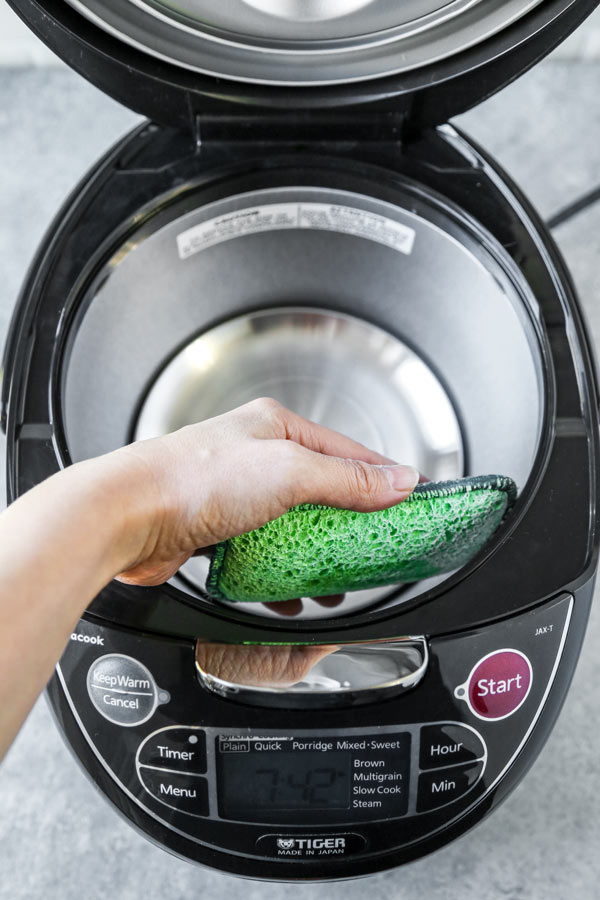
A rice cooker is one of the most versatile kitchen appliances, allowing you to make perfect rice, steamed vegetables, porridge, and more at the press of a button. However, like any appliance, rice cookers require regular cleaning and maintenance to keep them functioning optimally. Failure to properly care for your rice cooker can result in a buildup of mineral deposits, bacteria, and grime that affects the appliance’s performance and lifespan. In this article, we will provide a step-by-step guide to effectively cleaning both the interior and exterior components of your rice cooker. Following these simple rice cooker cleaning and maintenance tips will help keep your appliance in pristine condition.
Before starting the cleaning process, make sure your rice cooker is unplugged and has cooled down completely. Handling a hot appliance can lead to burns or other accidents.
Take out the inner pot and any removable accessories, such as the steam tray or rice spatula, from the rice cooker. These parts are usually dishwasher safe, but it’s best to check the manufacturer’s instructions to be sure.
Wash the inner pot with warm water and mild dish soap. Use a non-abrasive sponge or cloth to remove any residue or stuck-on food. Avoid using harsh chemicals or abrasive materials that can damage the pot’s non-stick coating.
Wipe the exterior of the rice cooker with a damp cloth or sponge. Be careful not to let any water enter the electrical components or control panel. If there are stubborn stains, you can use a mixture of vinegar and water to gently remove them.
The steam vent is an essential part of the rice cooker that allows excess steam to escape during the cooking process. Use a small brush or toothpick to remove any debris or food particles that may be blocking the vent. Keeping the vent clean ensures proper ventilation and prevents the buildup of odors.
After cleaning, make sure all the parts are thoroughly dry before reassembling the rice cooker. Moisture left inside the appliance can lead to mold or damage. Once everything is dry, put the inner pot and accessories back into the rice cooker.

When serving rice from your cooker, use soft utensils like a wooden or silicone rice spatula. Avoid using metal utensils, as they can scratch the non-stick coating of the inner pot.
To maintain the non-stick coating of the inner pot, avoid using abrasive sponges or brushes that can damage the surface. Gentle cleaning with a soft cloth or sponge is usually sufficient.
Over time, mineral deposits can accumulate in your rice cooker, affecting its performance. Descaling your rice cooker periodically helps remove these deposits. To descale, fill the inner pot with a mixture of equal parts water and vinegar. Let it sit for an hour, then rinse thoroughly and wipe clean. This process helps remove mineral buildup and keeps your rice cooker functioning optimally.
When not in use, store your rice cooker in a clean and dry place. Make sure the inner pot and accessories are completely dry before storing to prevent the growth of mold or bacteria.
Always refer to the manufacturer’s instructions for specific cleaning and maintenance guidelines. Different rice cooker models may have different requirements, so it’s important to follow their recommendations to ensure optimal performance and longevity.

Keeping your rice cooker sparkling clean through regular washing, descaling, proper storage, and careful handling will ensure it continues cooking fluffy, delicious rice for years to come. Make appliance care a part of your routine. Be sure to unplug, fully disassemble, and dry all parts after each use. Avoid abrasive materials or harsh chemicals that could damage the nonstick coating. Refer to manufacturer guidelines as well. A few minutes of preventive maintenance pays off in the long run with an odor-free, high-functioning rice cooker. Implement these rice cooker cleaning tips and you’ll always have perfectly cooked rice ready anytime.
